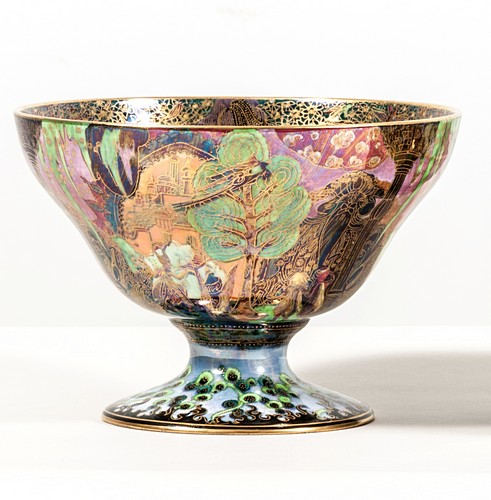The Martin Brothers and William De Morgan
Victorian London was a hot-bed of decorative pottery production. Some of the most iconic Victorian pottery to be produced came from the Martin Brothers. They became most famed for their 'Wally Bird' tobacco jars. These peculiar beasts in stoneware had their own unique characters, sometimes based on prominent public figures or lawyers, and were exquisitely modelled, detailed, and glazed in blues, greens and buff glazes. They sat in their shop in High Holborn amongst vases and other vessels incised and modelled with other fantastical animals, beasts, and fish. These grotesque pieces convey the essence of harsh Victorian city life, and the macabre humour ingrained in Victorian society. They have always been highly regarded academically, with some accrediting them to influencing the founders of the Studio Pottery movement, but commercially they continue to make the headlines. The auction record stands for a giant crab which sold for £184,000 in 2018!
William De Morgan was another lead figure in the Arts and Crafts-inspired Victorian Art Pottery movement. Based in Chelsea and Fulham, his main output was decorative tiles (decorative tiles in themselves a huge collecting area at auction). One of his trademarks were tiles with an Islamic influence, with vibrant foliate designs often in turquoise, green and blue glazes such as those commissioned by Lord Leighton for his Islamic Hall. He also produced pictorial multi-tile panels for steam ships and ocean liners. And then there are individual tiles that frame more Victorian grotesque animals and beasts. He became a master at lustre glaze firings at a time when kiln technology was limited, often combining ruby red glazes under a silvered lustre finish. But his output went beyond the two dimensional tile as he also produced impressive Antique-inspired vessels again painted with weird and wonderful creatures.


